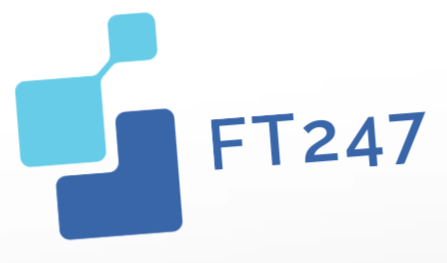A Beginner’s Guide to Coding for Kids
Coding is becoming an essential skill in today’s technology-driven world. Introducing children to coding can enhance their problem-solving abilities, creativity, and critical thinking skills. This guide will provide a comprehensive overview of coding for kids, including different programming languages, online resources, tools, and the benefits of learning to code at a young age.
Why Teach Kids to Code?
Coding is not just about learning a programming language; it helps children develop a logical approach to problem-solving. According to a report by the World Economic Forum, the demand for tech-savvy professionals is expected to grow significantly. Learning to code can set kids up for future career opportunities while providing a solid foundation for other academic subjects, particularly mathematics and science.
Key Benefits of Learning to Code
1. **Enhances Problem-Solving Skills**: Coding teaches children to break down complex problems into manageable parts, which is a valuable skill in everyday life.
2. **Boosts Creativity**: Through coding, kids can create games, animations, and websites, allowing them to express themselves and turn their ideas into reality.
3. **Encourages Persistence**: Coding requires trial and error, fostering resilience as children learn to troubleshoot and refine their work.
4. **Prepares for Future Careers**: With technology permeating all sectors, coding skills are increasingly valuable in the job market.
Getting Started with Coding
For beginners, the journey into coding can seem overwhelming. However, several resources and platforms make it easier for kids to start learning. Here are some popular coding languages and platforms ideal for children.
Popular Programming Languages for Kids
1. **Scratch**: Developed by MIT, Scratch is a visual programming language that allows kids to create interactive stories, games, and animations by snapping together code blocks. It is designed for children aged 8 to 16 but is used by all ages.
2. **Python**: Known for its readability and simplicity, Python is a great first language for kids. It’s versatile and used in various fields, from web development to data science.
3. **JavaScript**: As the backbone of web development, JavaScript is essential for anyone interested in creating websites. It can be challenging but offers an excellent opportunity for kids who want to dive into web programming.
4. **HTML/CSS**: While not programming languages in the traditional sense, HTML and CSS are crucial for web development. Learning these languages can help kids understand how websites are built and styled.
Online Resources and Platforms
1. **Code.org**: This nonprofit organization offers free coding lessons for kids of all ages. Their courses include a variety of engaging activities, including games featuring popular characters.
2. **Khan Academy**: Khan Academy provides a range of courses, including computer programming. Their interactive platform allows kids to learn at their own pace.
3. **Codecademy**: While more geared toward older teens and adults, Codecademy offers introductory courses in various programming languages that can also benefit motivated younger learners.
4. **Tynker**: Tynker is designed specifically for children, offering courses in coding that incorporate game design and interactive storytelling.
Tools and Software for Young Coders
Several tools can help kids learn coding in a fun and engaging way. Here are some notable mentions:
Visual Programming Environments
1. **Scratch**: As mentioned earlier, Scratch allows children to create projects using a drag-and-drop interface, making it easy and intuitive.
2. **Blockly**: Developed by Google, Blockly is another visual programming language that uses blocks to represent code concepts. It can be integrated into various platforms.
Game-based Learning Platforms
1. **Roblox Studio**: This platform allows kids to create their own games using Lua, a beginner-friendly programming language. The popularity of Roblox makes it a thrilling way for kids to learn code while also engaging in a gaming environment.
2. **Minecraft: Education Edition**: This version of the popular game includes coding lessons that teach children basic programming skills through interactive challenges.
Robotics Kits
1. **LEGO Mindstorms**: This robotics kit enables kids to build and program robots using a visual programming language. It combines coding with hands-on learning experiences.
2. **Sphero**: Sphero offers programmable robots that can be controlled through coding. They provide various activities that teach coding concepts in a playful manner.
Creating a Learning Environment
To maximize the effectiveness of coding lessons, creating a supportive learning environment is crucial. Here are some tips for parents and educators:
Encourage Exploration
Allow children to experiment with different coding platforms and languages. Encouragement to explore can lead to higher engagement and a deeper understanding of coding concepts.
Set Realistic Goals
Help children set achievable coding goals. Whether it’s completing a project on Scratch or building a simple website, achievable goals can keep them motivated.
Promote Collaboration
Coding can be a social activity. Encourage kids to work in pairs or groups, allowing them to share ideas and learn from one another.
Measuring Progress in Coding Skills
Tracking progress is essential to ensure that children are learning effectively. Here are some ways to measure their coding skills:
Project Completion
Evaluate children based on the projects they complete. Completing a game on Scratch or a simple website can indicate their understanding of coding concepts.
Participation in Coding Competitions
Encourage participation in coding competitions such as hackathons or coding challenges, which can provide benchmarks for their skills.
Feedback and Reflection
Regularly provide constructive feedback on their projects. Encourage them to reflect on what they learned and what they could improve in their coding journey.
Financial Investment in Coding Education
Investing in coding education can range from free resources to paid platforms. The average annual cost for coding classes or camps can vary significantly:
1. **Free Resources**: Platforms like Code.org and Scratch offer free coding tutorials and lessons.
2. **Paid Online Courses**: Websites like Codecademy Pro and Tynker’s premium courses range from $19.99 to $299.99 annually, depending on the level of access and content provided.
3. **Coding Camps**: In-person coding camps can cost between $200 to $2,000 for a week-long program, depending on the location and curriculum provided.
4. **Robotics Kits**: Kits such as LEGO Mindstorms typically cost around $350, while Sphero robots can range from $50 to $150.
Conclusion
Coding is an invaluable skill for children in the digital age. By providing them with the right tools, resources, and a supportive learning environment, parents and educators can nurture a generation of innovative thinkers and problem solvers. The journey may seem challenging initially, but the benefits of learning to code will undoubtedly enhance children’s cognitive abilities and prepare them for future success.

